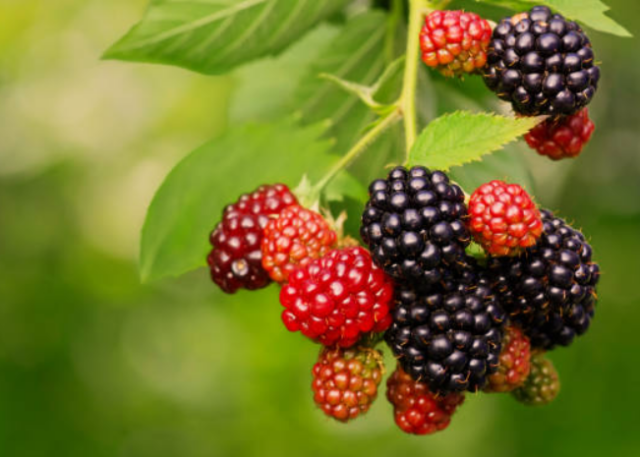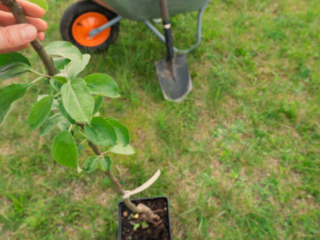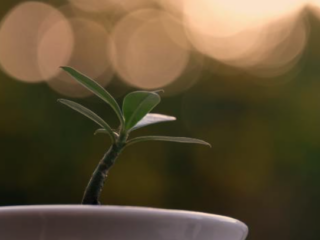Nestled within lush greenery, deep within forests and thickets, is a verdant abundance of nature’s most delightful treats: brambleberries. Because of its rich flavor, remarkable nutritional profile, and fascinating history, this underappreciated gem of the wild berry world merits more attention.
What is a Brambleberry?
The brambleberry, also known as the blackberry, is the edible fruit produced by various species of the Rubus genus in the rose family. These plants are characterized by their thick, thorny stems (or canes) covered in prickles, which give them their characteristic “bramble.” While blackberries are the most well-known type of brambleberry, this term also encompasses other similar berries like boysenberries, olallieberries, and marionberries.
Despite their name, brambleberries come in a range of colors, from deep purple-black to red and golden hues. Their signature look features a hollow core of tiny seed-like drupelets clustered together into a plump, juicy little package bursting with sweet-tart flavor.
A Long and Storied Past
Brambleberries have been providing food and medicine to humans for thousands of years. ancient Romans were among the first to cultivate blackberries, recognizing their nutritional value and unique taste. Folklore and mythology have long included references to brambleberries, from the Celtic legends of the Bramble Arches to biblical accounts of brambles and thorns.

In the 16th century, humble brambleberry patches gained popularity among European monasteries that made use of the fruit’s natural spring tonic properties. Native Americans have an even older tradition of harvesting wild brambleberries for food, dye, and medicinal remedies.
It wasn’t until the early 1600s that colonists introduced brambleberry plants from Europe to North America. From there, new varieties were developed through cultivation and hybridization efforts, like the Loganberry (a hybrid of a wild blackberry and a raspberry) and the marionberry, developed at Oregon State University in the 1950s.
Today, brambleberries are grown commercially on every continent except Antarctica, with the top producers being Serbia, Mexico, and the United States (especially the Pacific Northwest).
A Nutrition Powerhouse
While brambleberries have historically been foraged for their tart-yet-sweet taste, they’ve gained modern popularity as a nutritional superstar among fruits. Just one cup of fresh blackberries contains over 30% of the daily recommended value of vitamin C, as well as robust amounts of fiber, vitamin K, and manganese.
But brambleberries are perhaps best known for their incredibly high antioxidant content. Packed with polyphenol compounds like anthocyanins, ellagic acid, and resveratrol, brambleberries have been dubbed one of the highest antioxidant foods around.
This powerful antioxidant punch is thought to help prevent oxidative stress and inflammation associated with chronic diseases like cancer, heart disease, and neurodegenerative conditions. Early research on brambleberries suggests potential benefits for brain health, diabetes management, and anti-aging.
Brambleberries also contain plant compounds that may help regulate blood sugar, improve vascular function, and promote a healthy gut microbiome. Their high fiber content (8 grams per cup) provides fuel for beneficial gut bacteria while supporting digestive health.
With such an impressive nutritional resume, it’s no wonder brambleberries have become a staple ingredient in healthy eating plans and recipes for vibrant wellness.
A Tantalizing Taste Sensation
Of course, nutrition is only part of the brambleberry’s charm. This luscious fruit captivates with its tangy-sweet flavor and velvety texture. Brambleberries offer notes of citrus, honey, and a subtle floral essence, depending on the variety.

Fresh brambleberries are a true delicacy. Whether plucked wild from a bramble patch or purchased at a farmer’s market or grocery store, their tender texture and juicy bite are simply divine. But don’t wait too long to enjoy them at peak ripeness; these fragile berries have a notoriously short shelf life of just a few days.
While fresh is best, frozen and freeze-dried brambleberries offer a convenient way to enjoy their tantalizing taste year-round. Plus, freezing helps lock in more of those valuable nutrients and antioxidants.
Brambleberries lend themselves well to both sweet and savory culinary applications. Use them for jams, jellies, baked goods, fruit sauces, and desserts like brambleberry crisp or cobbler. Or get creative with savory uses like salads, salsas, glazes, and even brambleberry balsamic vinegar.
For maximum flavor impact, look for recipes that pair brambleberries with complementary ingredients. Lemon, ginger, vanilla, mint, honey, and spices like cinnamon or clove all make wonderful flavor companions. Brambleberries also pair beautifully with cheeses, herbs, nuts, dark chocolate, and even smoky or umami elements like bacon or balsamic vinegar.
Home Is Where the Brambleberries Grow
Speaking of brambleberry bounty, you can experience the joy of harvesting your very own brambleberries in your backyard. Thanks to improved cultivation techniques, growing brambleberries is more accessible than ever for home gardeners, even those with limited space.
Brambleberries prefer full sun and well-draining soil. They’re tolerant of colder climates and can be grown in large containers or trained along trellises in raised beds for an attractive edible landscape element.
When planting, choose from upright, semi-erect, or trailing growth habits. Upright varieties produce the largest brambleberries but require robust trellising, while trailing types make for easy ground cover harvests in small spaces.
With hundreds of cultivars available, you’re sure to find brambleberry varieties that suit your climate and tastes. Popular upright types include Navajo, Ouachita, and Triple Crown, while trailing favorites encompass Siskiyou and Boysen. No matter the cultivar, be prepared to contend with those signature bramble thorns during harvest!
For the more adventurous brambleberry enthusiasts, try your hand at propagating new plants from cuttings or runners. You can even create fun new hybrids by dabbling in a little backyard breeding between different Rubus varieties. Who knows—maybe you’ll be the one to develop the next big brambleberry craze!
Whether you grow your own, pick them wild, or purchase them, brambleberries deserve a starring role in your culinary adventures. From sweet indulgences to healthy meals, these unsung gems are waiting to fill your pantry (and your belly) with delectable joy. So go forth and embrace the tantalizing tang of the humble brambleberry! Your taste buds will thank you.




